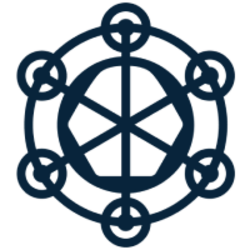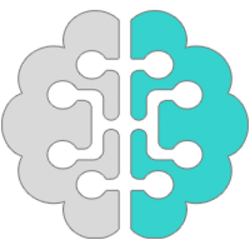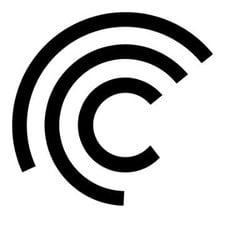
By Neeraj Khandelwal
In today’s evolving and fast-paced world the internet continues to be the primary catalyst for change. Web3 is emerging as its new growth engine which is steering the change towards a decentralized, transparent, and creator led economy. The latest iteration of the internet is expected to resolve many fundamental issues of Web2 such as putting greater control in the hands of users, more privacy over data, ending the monopoly of Big Tech, etc.
The year 2022 has laid a solid foundation for Web3 with discussion on major issues like unfair censorship and data security gradually starting to come to life. This movement will eventually empower users by giving back the power to control their own data. Digital economy sans traditional gatekeepers and middlemen will be the next phase of the internet.
Seamless switch between Web2 and Web3
The Web3 landscape is widening with every passing year, 2022 being another critical year in its building phase, with $30 billion of funds flowing into blockchain projects. With the spotlight on ‘Developers and Builders,’ the year saw much progress on the underlying technology and Web3 infrastructure. Emerging DeFi apps are designed to be user-friendly with excellent user interfaces. In 2023 and 2024, many such apps will revolutionize this space.
As the barriers and layers preventing people from entering Web3 applications are simplified, we will soon reach a point where users can access Web3 with the same superior user experience that is currently available in Web2. The dApps(Decentrialised apps) on Web3, will be powered by blockchain technology, which allows them to run without the need for a central authority. It means users can interact without giving away their personal data, leading to less censorship. Users will seamlessly switch between Web2 and Web3 applications and may not even be aware that their application is powered by underlying blockchain technology. The experience will be seamless and smooth just like the current fintech apps albeit with complete data privacy.
Transparency and control
2022 has essentially proved that transparency and control are the most critical aspects of this industry. The fallout of FTX, the second-largest crypto exchange, and a few other incidents have made self-custody wallets more relevant than ever. However, the focus now will be on making self-custody extremely user-friendly. The industry can not continue to burden the user with the responsibility of managing a recovery phrase of 12 to 24 words.
Many stakeholders are aggressively working to address this issue, and the solution lies in developing cutting-edge technologies that eliminate seed phrases, multi-layer security, assisted recovery, and much more. The overall goal is that a user must ‘own their cryptos.’ The previous narrative – Not Your Keys, Not Your Crypto will soon be replaced by Your Keys, Your Crypto. It is important to solve the single point of failure, wherein users lose all their funds if their keys are lost or compromised.
Increased Use cases for increased penetration
While usability could be the highlight of 2023, users will gradually experience how Web3 will touch their daily lives, for example, Web3 alternative to email (Decentrailised mail – Dmaill), entertainment, games utilizing blockchain, cab booking platforms, social media revamped to incorporate Web3 features (Twitter as an example), Digital identity, DAOs, dApps, Decentralized Cloud Storage, Decentralized Browsers, etc. The Web3 will be based on Semantic Web concepts which allows computers to understand human language better, giving rise to new possibilities for e-commerce and the natural language processing makes the interaction more intuitive, personalized and efficient. With more people exploring DeFi opportunities, innovative financial products such as lending, staking, yield farming, Swaps, and LPs will see more user penetration.
NFTs
A great example is the evolution of NFTs, wherein the shift from art-focused NFTs has already started; what needs to be seen is how quickly NFTs could be turned into something more useful for users other than collectibles. This year, entrepreneur Gary Vaynerchuk showcased how a digitized token can be used as a unique ticket to a live event when he issued tickets to his VeeCon crypto conference using utility NFTs. In 2023 we might see more use cases like memberships, digital merchandise, and intellectual property. Unique digital ownership, a feature inherent to NFTs, will be extended in both the digital and physical realms, and tokenizing real-world assets will become more common.
Gaming
A possible route to get more users to benefit from decentralization is integrating Web3 into the current apps. A hybrid of Web2 and Web3 will essentially rule the internet space in the coming years. Metaverse will be an added element where games will be more entertaining and enable monetary benefits for potential players. This can be a way of redistributing wealth from gaming companies to the community, a Web3 promise that will make the internet fairer and inclusive.
DEXs to be more popular
The decentralized exchange (DEX) market has seen a surge in recent years as it offers a higher level of security and privacy in comparison to its centralized counterparts. In a DEX, the trade is conducted on-chain, making it totally transparent with no dependencies on a third party to facilitate the completion of transactions. In addition, DEXs are frequently built on top of specific blockchain protocols, such as Ethereum. Given the recent instances of scams and frauds, users are demanding more transparency coupled with the control of maintaining their keys and data. Further, as the market matures and more people become familiar with DEXs, the user experience is expected to improve, making DEXs more accessible to a wider audience.
In addition, DEXs are frequently built on top of specific blockchain protocols, such as Ethereum. As the blockchain ecosystem evolves, it is likely that DEXs will become more integrated with various other protocols, enabling greater interoperability and increased liquidity.
Conclusion
Web3 will revolutionize the way the world does business. It will give birth tonew business models, new opportunities for collaboration, innovation and productivity will emerge. The technologies used in Web3 i.e. blockchain, edge computing, VR/ AR/ are ubiquitous and not restricted to one sector or industry or organization, it is rather enabling larger scale growth and development. Business can reap benefits of Web3 through better customer interface, interoperability, higher control over security and direct access to the end user with no middlemen. Web3 presents an inflection point to a newer and better next generation internet.
The author is co-founder, CoinDCX
Follow us on Twitter, Facebook, LinkedIn












































































Be the first to comment